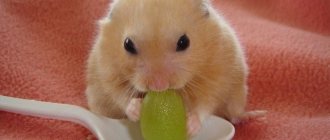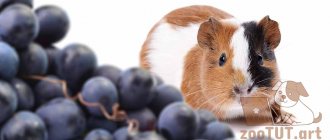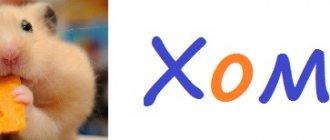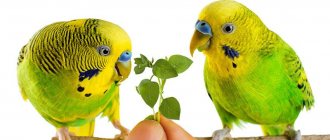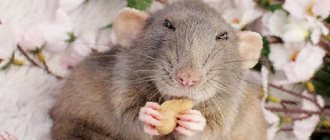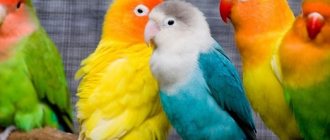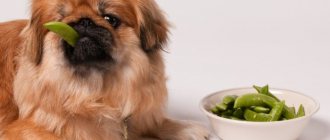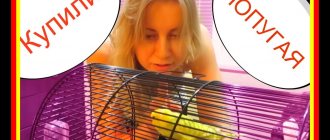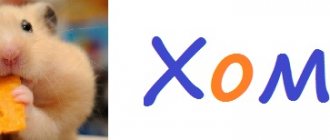Feeding a parrot can be a fun task if you know what you're doing. We all love to watch our pets eat.
There are many foods that you can feed your parrot, and equally, there are many foods that are dangerous for your bird. Knowing what food to feed and what not to feed is key to keeping your bird healthy. Parrots can eat most fruits and vegetables, but there are some common ones, like avocados, that can be harmful to your bird. Another thing that worries most parrot owners is the issue of pesticides.
The answer is yes, parrots can eat grapes. They are safe for your parrot, but should be fed in moderation due to the high concentration of fructose in grapes. This means that you should feed your parrot grapes from time to time only as a treat and not as part of their regular diet.
Grapes are a hit with parrots. They are very sweet and high in fructose, which means these fruits can boost your bird's energy.
Controlling the amount of fructose is not the only reason you should feed grapes sparingly to your parrot. Parrots know that grapes are sweet fruits and they like them, so when you offer grapes along with other food, your bird will only extract the grapes from the mixture and not the more nutritious foods. If you are not careful, this can lead to serious vitamin deficiencies.
Can a parrot have grapes?
In their natural habitat, fruits and berries make up a significant part of the parrots' diet, second only to grains. Therefore, they can be given to tamed birds, regardless of the type of parrot. Grapes contain a lot of vitamin A and C and microelements.
Fructose in the composition is especially worth highlighting - it provides the parrot with strength, being a carbohydrate. Depending on the concentration of these substances, it is necessary to determine the rate of fruit consumption by the parrot.
Seedless
You can give grapes to budgies, and sultanas are no exception. It is particularly sweet due to its high sugar content. Therefore, it is worth giving it no more than 3 berries per day. Otherwise, the pet will wean itself off the food, demanding only treats. Overeating sultanas will affect your digestive health - there is a risk of obesity or diarrhea.
As for the ripeness of the berries, it should be moderate. Overripe grapes begin to ferment, and parrots are susceptible to alcohol. It is also impossible to feed it “green” fruits - the bird may be poisoned.
Young parrots can be given sweet berries almost every day, but for older parrots the frequency of such meals should be reduced - large amounts of sugar are difficult to digest.
With bones
The body of parrots is sensitive, so some birds may be allergic or intolerant to the berry. If after feeding grapes your pet has problems with bowel movements, you should try giving him other berries. If unripe or unwashed berries are given, diarrhea may occur, and as a result, dehydration. It is not necessary to remove the skins from the grapes.
Grapes with seeds are good for parrots; they contain less fructose, but more other useful substances:
The fiber content is also high, which has a beneficial effect on the digestion and vigor of the pet. After including grapes in the diet, the bird began to drink a little less water - this is normal. It simply quenches thirst perfectly and is quickly digested.
Grapes can be given to lovebirds without removing the seeds, just like other species of these birds. They are rich in antioxidants, which protect the body's cells and ensure healthy development. A special feed additive for parrots is even prepared from them - what can we say about the product in its natural form.
Grape twigs
Parrots tend to sharpen their beaks and claws, and the branches of grapes are perfect for this. They will not eat them because of the unpleasant bitter taste - too much fiber. And if suddenly your feathered pet decides to try it, it’s better to take it away, because their stomach simply cannot digest such an amount of this substance.
But they can safely remove the green bark and eat it - it also contains useful substances, but there is no harm from it. You can safely supply your parrot with grape shoots from time to time.
Grapes that taste too sour should not be given to your pet - they can cause upset and pain. For them, grapes should be a reward, not torture.
Parrot does not eat fruit - causes of the problem
Many owners face this problem. Most often, the reason that a parrot does not eat fruit is incorrect maintenance, which leads to fear of everything new. Here are a couple of examples:
- Large birds (like Grays, cockatoos, Amazons) are sold by resellers who illegally imported the birds into our country. Moreover, a bird can live with resellers for a very long time. What does a reseller need? Of course, to quickly sell live goods. In the meantime, the bird lives with him and feeds him at minimal cost. The cheapest and most nutritious food is seeds. This is what the reseller will offer. Over time, the bird gets used to the meager diet and no longer wants to eat anything else.
- Medium and small parrots (budgies, cockatiels, lovebirds) are usually sold at markets (from the same resellers) or in pet stores, which are also interested in minimizing the cost of keeping birds, and, therefore, are fed with cheap dry grain mixture.
In particular, for the above reasons, the Kakadushka pet store does not sell birds, so as not to become like similar stores, but recommends contacting nurseries and breeders, where they are provided with proper care and maintenance.
How to give grapes to parrots
A treat can be offered to a parrot only after it has eaten its grain food. It is necessary to maintain his strength, despite the bland taste. And as a reward, you can treat your pet to a berry.
The fruits should be carefully inspected for damage and washed immediately before your feathered friend eats. In winter, good grapes are not so easy to find: chemicals are used for their long-term transportation and storage. This will only harm the parrot, so in winter it is better to feed it with other fruits.
Green berries should be introduced into the diet gradually. You need to start small - in the first days give your pet one berry at a time, gradually increasing the daily portion to 2-3 pieces. Such progress can only happen if the pet reacts positively to the new product. If health problems arise, you need to stop this idea.
There is an opinion that large dark grapes can frighten a parrot - it is better to peel them before serving. It’s not worth feeding parrots this delicacy closer to the night - they won’t fall asleep due to the surge of energy, which will disrupt their entire sleep pattern.
Is it possible to feed a parrot grape leaves and vines?
Vine leaves and vines are also safe for parrots. If you have a grapevine in your garden, you can feed your parrot more than just the fruits of this plant.
Take a few pieces of vine and offer them to your parrot to chew on. However, the vines should be free of toxins, harmful dirt or rot. Do not feed the vine to your parrot if it has ever been treated with pesticides.
Wash the vines in hot water with a little dishwashing liquid. Scrape everything off the surface, including bird droppings and insects. Allow the vines to dry in the sun before feeding your parrot.
Grapevines are an excellent source of essential nutrients such as vitamin E, vitamin C and iron, which are an excellent source of dietary fiber.
For this reason, even if the skins are harmless, it is recommended to remove them from the grapes before giving them to your parrot to avoid pesticide poisoning.
Grapes for Corella parrots
Gastrolites and mineral supplements
Gastroliths are small pebbles swallowed by birds and necessary in the process of grinding food. Parrots by nature do not require gastroliths. In most other birds, they play the role of millstones and contribute to the mechanical processing of food in the gizzard. In this case, gastroliths remain in the gizzard for a long time, often until complete destruction. Thanks to the special structure of their beaks, parrots (any, including small species) crush grains rather than swallow them whole, like pigeons or passerines. Digestion in parrots begins in the crop, while in most other groups of birds, food only swells in the crop, and only in the stomach begins to be digested, ground by gastroliths. Sand for parrots is a source of calcium and phosphorus. The sand you need is organic, that is, the shells of sea mollusks crushed into digestible crumbs. Mineral sand is useless for all parrots.
However, it should be noted that in all groups of parrots there is a need to receive coarse plant fiber (wood and bark) with food. These substances are not gastroliths, but actively promote digestion and the formation of healthy microflora.
Parrots need mineral supplements in one form or another. The best of them is the pressed cuttlefish shell, or sepia. Parrots that are accustomed to this feeding (getting used to any new food requires time and patience from the bird owner) happily chew the sepia themselves. Sepia can hang in a cage until it is completely destroyed.
If the parrot is not accustomed to chewing sepia and does not receive enough calcium from the diet, or the resulting calcium is not absorbed properly, this can have a very adverse effect not only on the condition of the plumage, beak and claws, but also on the condition of the internal organs. However, excess calcium is no less dangerous than its deficiency, so calcium supplements can only be used as prescribed by a veterinarian.
The following plant foods contain well-absorbed calcium:
• nettle • purslane • chicory • aromatic celery • Chinese cabbage • various varieties of lettuce • parsley • beets • spinach • broccoli • mustard greens • greens and roots of turnips and turnips
Source
Is it possible to offer grape branches to the wavy?
Twig food is useful for birds due to the presence of microelements, but with some reservations. The branches should be chosen thicker so that the parrot cannot bite them. The material should be thoroughly disinfected before serving, because vineyards attract parasitic insects.
Grape leaves contain a high concentration of Omega-3 fatty acids, which is beneficial for the joints and cardiovascular system of birds . Therefore, there is no need to cut them off. Through branches, the parrot not only receives additional elements, but also takes care of its beak, which is also important.
Vegetables, fruits and berries for cockatiels
Vegetables and fruits are a natural source of vitamins, minerals and valuable fiber and therefore must be present in the cockatiel's diet. Birds can be fed most fruits consumed by humans: apples, pears, cherries, strawberries, raspberries, blackberries, bananas, etc. As for vegetables, parrots should be given carrots, cabbage and spinach.
It is very important to offer it to them correctly. Birds that disdainfully reject chopped apples and carrots placed in a food bowl, for example, chew them with enthusiasm when they find them on a branch or a dull nail.
Below is a list of some vegetables and fruits that you can feed your parrots. It is worth noting that new food should be introduced into a pet’s diet in small doses.
Vegetables and fruits must be thoroughly washed before feeding to birds. In addition, it should be remembered that cockatiels should not be fed fruits that contain excess nitrates and pesticides.
A good vitamin food for cockatiels are citrus fruits (oranges, tangerines, lemons). It is not recommended to give birds citrus fruits with peel, as they contain a lot of essential oils. It is better to feed citrus fruits to parrots in slices.
Apples and pears contain many minerals, sugars and vitamins, so these fruits should be present in the cockatiel's diet all year round. Moreover, apples and pears are suitable for feeding to birds in raw, boiled and dried form. Dried fruits are pre-soaked for 2–4 hours and then given to pets.
Tomatoes, which are also given to birds, contain carotene. Cockatiels are reluctant to eat tomato pulp, preferring to peck the seeds.
Potatoes, which contain a lot of starch but few vitamins and microelements, are given to cockatiels in small quantities, both raw and boiled.
There should always be bowls of dry food and water in the parrot's cage.
From the first day of being in the house, the cockatiel should be taught to eat vegetables and fruits. Vegetables, fruits and young greens are absolutely necessary in the diet of cockatiels and should make up at least 40% of the daily food intake per day. All fruits and vegetables should be washed thoroughly with warm water and sometimes with a brush. It is advisable to peel imported vegetables and fruits, because artificial chemicals often remain on them, keeping the fruit from withering.
Beetroot and carrots are very useful vitamin foods. They are given to parrots only in raw form, grated and mixed with other ingredients (boiled egg, crackers, etc.).
Turnips are significantly inferior to carrots and beets in terms of the content of vitamins and minerals, but many lovers include them in the diet of their pets.
Cabbage is rich in vitamins and microelements and is therefore a good food for cockatiels. Cabbage is given to birds only raw, cutting the leaves into small pieces.
All fruits and berries can be given fresh, defrosted after freezing, and also lightly cooked, in the form of puree or juice.
The following vegetables and fruits are useful and desirable for introducing into the diet of cockatiels:
Bananas can be included in the diet of parrots. They contain little protein, but they are high in carbohydrates, which makes them a very nutritious type of food. It is necessary to feed ripe fruits, with a yellow peel, which is first removed. The banana should be cut into pieces 2-3 cm long or the fruit should be divided into 2-3 parts.
Citrus fruits (oranges, tangerines, lemons and other citrus fruits) are a good vitamin food for parrots. If possible, they should be included regularly in the parrots' diet. Citrus fruits should not be given whole or with the peel, as it sometimes carries residues of various chemicals that were used to treat the trees to control pests. In addition, citrus peels contain a lot of essential oils, and parrots usually throw them away, not finding anything attractive in them. It is better to feed all citrus fruits in slices, in several doses.
Lemon. Lemon fruits are elliptical, with an original yellow color, which in Russian is called “lemon”.
Lemon fruits are very aromatic, their smell is specific. The pulp makes up approximately 60% of the fruit's weight. It contains up to 4–6% citric and other acids, 2–4% sugars, vitamins C, B1, B2. Juice is squeezed out of lemons. Lemon fruits are used for the prevention and treatment of hypo- and vitamin deficiencies.
Apples are suitable for feeding parrots raw, boiled and dried. The chemical composition of apples is extremely diverse. They contain various organic acids, tannins, B vitamins, vitamin C, carotene, essential oils, salts of various metals and a number of other compounds. Sweet varieties of apples are a favorite delicacy of parrots, so they should be included in the diet of parrots all year round. They are given in small slices, secured between the rods of the cage. Dried apples can be soaked in water for 2-4 hours before feeding and lightly boiled. You can feed parrots with small unripe fruits, but they should be given little by little, paying attention to the birds’ stool to avoid upset.
The content of nutrients and vitamins in unripe apple fruits is much less than in fully ripened apples (with brown seeds). Most parrots eat the apple seeds enclosed in the core with pleasure, sometimes gnawing off part of the fruit and throwing it away to start with the seeds.
Parrots should not be fed apples that are rotten, wrinkled or soiled. If the affected areas of the fruit are small, then it is better to cut them off and wash the fruit itself thoroughly, after which it can be used to feed birds.
Carrots are given to all types of parrots, either grated or in slices, secured between the bars of the cage. It is indispensable in autumn and winter, during the period of feeding chicks. The birds are also fed carrot tops, which also contain many vitamins.
Fresh grated carrots are a complete nutritious food for all types of parrots. In terms of carotene content (provitamin A), which has a beneficial effect on growth, carrots are second only to sweet peppers and superior to all other vegetables. It contains up to 9% sugar easily digestible by the body, up to 1.3% proteins, vitamins E, K, C, group B, amino acids, oils, starch, calcium salts, phosphorus, iron, iodine, copper, cobalt.
An adult bird should be given 4–10 g of fresh carrots daily. Carrots are fed only raw, cut into pieces or grated on a coarse grater and mixed with other ingredients (boiled egg, breadcrumbs, medications, etc.).
Nettle has a high nutritional value, containing 20–24% protein (vegetable protein), 18–25% fiber, 2.5–3.7% fat, 31–33% without nitrogenous extractives. It contains a lot of vitamin K, calcium salts, potassium, sodium, magnesium, phosphorus, iron and others. There are about 10 species of nettle found in our country. Of these, the most common are stinging nettle (common) with wide leaves and stinging nettle (small) with small, deeply incised teeth along the edge of the leaf (this type of nettle is less valuable). Young nettle leaves are especially nutritious in early spring. Fresh nettle must first be boiled for 2-3 minutes in water, then lightly squeezed and, after chopping, added to the wet mixture.
Grass meal made from nettles also has high feeding qualities. In terms of the content of substances necessary for the body, it is superior to flour from a mixture of timothy and clover and is equivalent to alfalfa flour. Nettle is collected before flowering (June-July) - later it loses some beneficial properties. The plants are mowed or picked and the leaves are allowed to wither a little, after which the nettle no longer “bites”.
To better preserve vitamins, nettle leaves are dried in the shade in a well-ventilated area. In winter, dry crushed leaves are added to the grain mixture or boiled for 5–6 minutes until softened in a container with a closed lid. After cooking, the water is drained, and the resulting mass is lightly squeezed and added to the wet mixture.
Green onions are a source of vitamins and other beneficial substances. Its feathers contain 2 times more vitamin C than lemons and contain vitamins B1, B2, PP. Onions prevent the occurrence of helminthic diseases in parrots, promote increased secretion of gastric juice and better absorption of food. Green onions contain phytoncides that have an antimicrobial effect. Onion phytoncides kill dysentery bacteria, diphtheria and tuberculosis bacilli, streptococci and staphylococci in the body.
Dandelion is one of the most complete green foods. This plant contains vitamins A, B1, B2, B6, B12, E, C and K, trace elements, easily soluble lime, and inulin. Its seeds are also very rich in protein. Dandelion rosettes appear in early spring, as soon as the snow melts. They need to be cut out with a knife with part of the rhizome and given to the birds in this form. Parrots most often eat not only the leaves, but also the buds and stalks of the dandelion. Dandelion seed heads are best given to birds when the fluff ball has not yet unfurled. Dandelion leaves are fed to birds from early spring to late autumn in unlimited quantities.
Cockatiels constantly need fresh, clean water. It should be changed daily, as well as every time the water becomes contaminated with food debris or feathers. You won’t drink dirty water, so why should a bird? It is also worth considering that water with added vitamins “spoils” faster, since the flavor enhancers contained there promote the growth of bacteria. It should be changed more often.
Water for birds should be protected, even if you use a filter. It is not recommended to give boiled water, there is nothing useful in it and the bird will not receive various useful substances. Also, you should not give water from springs and wells, as they may contain dangerous bacteria. In addition, it can be oversaturated with minerals and its frequent use can lead to certain diseases.
Dark green vegetables, cabbage, beet tops, and spinach can be sources of calcium. The main need for this element should be fulfilled by mineral stones, chalk, sepia (cuttlefish bone). However, sometimes birds gnaw stones just for the sake of play, so the diet of cockatiels should be balanced and contain a sufficient amount of calcium in soft food.
Protein is very beneficial for cockatiels and is especially necessary during molting. Protein-rich foods are nutritious not only for you, but also for your birds. You can offer your pets sprouted food, eggs, and low-fat cottage cheese. It is worth remembering that such products cannot be given a lot and often, as they provoke birds to reproduce. Sprouted food should not be given more than 2-3 times a week, in the amount of 1 tablespoon. Eggs and cottage cheese can be given no more than once every two weeks, no more than half a teaspoon. In addition, such food quickly deteriorates. They must be removed from the cage after an hour, even if the bird did not pay attention to them at all.
Some features of vegetables and fruits
Dark green and bright orange vegetables contain the highest amount of vitamins (carrots (carrot tops), beets (beet tops), broccoli, pumpkin, cabbage, bell peppers, spinach, etc.)
Some vegetables do not need to be fed often. Spinach contains large quantities of oxalic acid, which impairs the absorption of calcium and blood clotting. It is better to give it once a week, then there will be no negative consequences.
Strawberries and grapes spoil faster than other fruits. Don't leave them in the cage for long periods of time.
After eating vegetables or fruits that contain large amounts of water, birds may have loose stools.
Source
Are grape seeds safe for a parrot?
Yes. You can feed your parrot grape seeds without causing any problems. The seeds of these fruits are rich in beneficial nutrients and antioxidants. Therefore, when cutting grapes for poultry, do not forget to put the seeds in the bowl.
If your parrot is still small, be sure to cut the grapes into small pieces before serving. Also, be sure to remove the seeds before feeding them to young parrots because their digestive systems may not be developed enough to break down grape seeds.
Your parrot will also enjoy playing with grape seeds.
What do wild parrots eat?
To find out what to feed your cockatiel at home, it is advisable to get acquainted with the menu of his brothers who are in the wild. The homeland of these wonderful birds is Australia. There they settle in steppes and forest-steppe zones. In such areas they find plant seeds, which they eat in large quantities.
In addition, the menu of wild cockatiels includes the fruits of various fruit trees, eucalyptus leaves, millet and wheat grains. Birds need trees not only to eat fruits. Branches and leaves are used.
Birds consume insects as animal protein. Water for life is found in fresh water bodies.
Is it possible to feed a parrot grape skins?
Typically, grape skins are not harmful to parrots. However, I must mention that grapes are classified as one of the most contaminated fruits on the market. According to a recent study, 99% of grapes contained pesticides, and a third of them were at critical levels of pesticide contamination, above what is considered fit for poultry or human consumption. Although the study was conducted in Europe, it is safe to assume that the results may be more or less the same for the rest of the world.
Diet preparation for cockatiels
It is not enough to buy a package of grain mixture for pet birds and stop there. Birds need to be provided with adequate nutrition and special attention must be paid to the preparation of the pet’s menu.
General concepts
Considering that in the wild, cockatiels feed mainly on grain and grass seeds, supplementing their diet with fruits, food for cockatiels should include nutrients, vitamins and microelements. You need to accustom your parrot to vitamin supplements from an early age. Birds will love trying a vitamin garland made from pieces of fruits and vegetables.
The poultry diet should consist of basic and additional feed components. Both the first and second parts are important for the birds. We are talking only about the quantitative ratio.
Types of main feed
The grain mixture is the basis for feeding cockatiels. Millet can be given in unlimited quantities. An important component for the cockatiel menu is corn, which can be given boiled or raw. The parrot especially loves boiled corn at the stage of milky ripeness.
In addition, the diet must include the following grains:
Cereals contain a large amount of plant proteins that the bird needs for good metabolism, as well as fiber for digestion. In addition, it is in cereals that vitamin B is found in large quantities. Birds need it to improve nerve conduction in muscle fibers and for high-quality plumage.
A cockatiel's diet is not complete without sunflower seeds, rapeseed, sesame seeds, safflower and meadow timothy. Add a small amount of walnuts, peanuts and hazelnuts to the mixture.
Seeds and nuts contain sufficient amounts of vitamin E, which supports the reproductive function of birds and easily digestible vegetable fats needed for energy.
Additional food
Approximately 30% of the diet is allocated to vitamin and mineral complementary foods. You cannot feed your cockatiel only grains and seeds, even if there is a wide variety of them.
You can give your birds fruits and berries every day:
Twice a week, cockatiels are offered bananas and a slice of peeled sweet orange or tangerine.
The Corella parrot can eat most of the known vegetables, which must be alternated:
The best legume for cockatiels to eat is green peas - dry or fresh. Currants, raspberries, and gooseberries are given fresh, dried or thawed. Fresh herbs would be good vitamin supplements for birds: dandelion leaves, carrot and beet tops, spinach and dill. Greens are crumbled into salad or sprinkled on porridge.
Birds like to chew on the branches of fruit trees, birch, willow and maple.
Twice a month, parrots should be given protein food in the form of low-fat cottage cheese or boiled chicken eggs. Parrots will not refuse rice, buckwheat, pea, oatmeal or millet porridge cooked in water. Adding salt, sugar, butter and especially spices is strictly prohibited. The porridge must be freshly cooked.
If you don’t want or have the opportunity to stand at the stove often, pre-prepared portioned briquettes with porridge can be frozen. Thaw immediately before use.
What other fruits can birds eat?
You can diversify the bird’s diet with other berries and fruits; fortunately, the budgie’s gastrointestinal tract is not as picky as that of other exotic birds. The main thing is that everything should be in moderation. An excess of vitamins and minerals is just as harmful as a lack of them.
Berries and fruits that are beneficial for budgies:
- banana;
- raspberries;
- apricot;
- pear;
- peach;
- plum;
- apple;
- melon;
- orange;
- gooseberry.
Astringent persimmons, potatoes in any form, avocado and mango with papaya are contraindicated for birds. Garlic, herbs and alcohol should also be excluded. When preparing mixtures, do not use sugar and salt.
List of prohibited foods
A varied diet does not mean that birds can be given everything. There are a number of prohibited products that should not end up in the bird feeder to avoid poisoning and digestive upset:
There is no need to risk your pet's health and offer him chips, fried, fatty foods. Sunflower and pumpkin seeds are given to cockatiels only raw. Canned green peas should not be given to birds.
Birds are allowed to fly around the apartment. This means that there is a danger of eating indoor plants. Most of them are poisonous to birds. A parrot will be poisoned if it eats the leaves of Dieffenbachia, geranium, Kalanchoe, aloe, and monstera.
Feed standards
The bird should be able to eat 30-40 grams per day. grain mixture (5-6 teaspoons). Overfeeding will not benefit the bird. This amount is quite enough for normal development. Excess grain leads to obesity and disruption of metabolic processes in the body. Small pieces of fruits, vegetables and berries are offered 2-3 times a day. Uneaten succulent food, including fresh grass, is removed from the cage on the same day so that it does not become moldy.
The bird will regulate the amount of mineral supplements in the form of sand and chalk itself. The volume of water is not limited. She should always be in the drinking bowl. Twice a week, water can be replaced with sugar-free compote or berry juice diluted in half with water.
During the mating season of nesting and raising chicks, the feeding of cockatiels changes. Products with a high protein content (cottage cheese, eggs) are given daily. Increased nutrition is also necessary during the period of plumage change.
Perches, perches, stands.
All perches in any bird's cages should be made from live branches with bark. Plastic, metal, concrete, and lime perches cannot be used.
On wooden attachments, bacteria and fungi persist for a much shorter time than on plastic or metal surfaces. The bark maintains the natural moisture of the skin of the birds' paws; the bark is edible and healthy. Such perches need to be changed once a month - this is another factor that disciplines animal owners.
A play stand for both a parrot and any other bird should be the bird's main place to spend time outside the cage. And for this, the stand must be interesting and useful to the bird. Here is an example of a simple stand in the bird room at Lyudmila Mengele.
The stand is not a playing field for a person! There is no need to make it from building materials, metal, plastic, pipes, boards!
All birds need bark!
Bark makes up more than half of a parrot's diet. This is the most natural chew. This is a natural substrate for maintaining normal moisture in birds' feet. It is a natural disinfectant.
The stand must be made from unsanded wood (branches, logs). The stand must be changed as the bird eats it. The stand should be a simple structure that you don’t mind throwing away.
Various bells, abacus, toys - this is just a person’s attempt to replace the useful with the interesting. When there are a lot of branches in the room, then toys are not needed at all. Toys are an accessory with which the owner convinces himself that he cares about the bird. Birds need branches, not toys; and if you cut the branches into short bars, you and your parrot will have the best toy).
It is convenient to string pieces of fruits, berries, vegetables, and mushrooms onto branches. All mushrooms edible for humans are edible for parrots and other birds - this is to avoid the questions: “can I eat chanterelles?” and honey mushrooms? and boletus mushrooms?...”
Results
Parrots need to purchase feed mixtures from trusted manufacturers and pay attention to expiration dates. Food for Corella Rio parrots has proven to be good.
It’s easy to check the quality of the purchased grain mixture: you need to pour a handful of the mixture with warm water and put it in a warm place. After two days, fresh, high-quality grains should germinate. Cockatiels will happily eat these sprouts. Missing grain will not germinate and cockatiels cannot eat it. Before offering vegetables and fruits to your pet, they must be washed thoroughly.
Source
